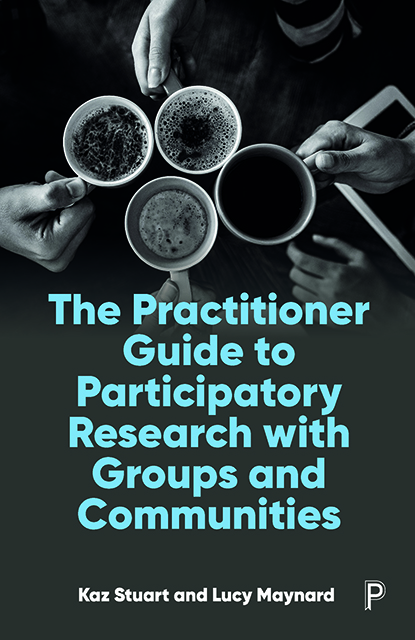Book contents
- Frontmatter
- Contents
- List of Figures and Tables
- Glossary
- About the Authors
- Acknowledgements
- Foreword
- Foreword
- Introduction
- 1 Just What is Participatory Research?
- 2 How do We Begin to Plan Our Participatory Research Project?
- 3 What Do We Want to Explore and Why?
- 4 What Ideas are the Foundations of Our Research?
- 5 How Will We go About Exploring Our Questions?
- 6 Who Can Get Involved to Explore Our Questions?
- 7 How Shall We Collect Our Data?
- 8 What Do We Do With Our Data?
- 9 How Do We Get Our Messages Out There?
- 10 How Do We Keep Everyone Safe?
- 11 Doing and Reviewing Participatory Research
- Conclusion
- References
- Index
4 - What Ideas are the Foundations of Our Research?
Published online by Cambridge University Press: 21 June 2023
- Frontmatter
- Contents
- List of Figures and Tables
- Glossary
- About the Authors
- Acknowledgements
- Foreword
- Foreword
- Introduction
- 1 Just What is Participatory Research?
- 2 How do We Begin to Plan Our Participatory Research Project?
- 3 What Do We Want to Explore and Why?
- 4 What Ideas are the Foundations of Our Research?
- 5 How Will We go About Exploring Our Questions?
- 6 Who Can Get Involved to Explore Our Questions?
- 7 How Shall We Collect Our Data?
- 8 What Do We Do With Our Data?
- 9 How Do We Get Our Messages Out There?
- 10 How Do We Keep Everyone Safe?
- 11 Doing and Reviewing Participatory Research
- Conclusion
- References
- Index
Summary
Chapter overview
This chapter will explain some of the core beliefs associated with different types of research. This is important so you know what underpins your research and so you can identify what might be informing other people’s thinking. This is about understanding different perspectives rather than working out a ‘right’ or ‘wrong’ approach. The chapter will give an overview of research philosophies and then dig into some key ones more deeply before supporting you to work out which philosophy is forming the foundations of your research project.
Research philosophy
The way we approach research is based upon certain beliefs and assumptions about the world, what there is to know in the world and how we come to know it. These beliefs act as a guiding principle for our behaviour or how we construct and conduct research. This is also referred to as our research philosophy. There is often discussion within this of the nature of ‘existence’, ‘reality’ and ‘truth’. We are not going to discuss these here, as we want to keep things straightforward, but feel free to explore this further – perhaps starting with our other book (Stuart, Maynard and Rouncefield, 2015).
These underpinning ideas are complex and change over time, so let’s look at a real-world example. The most common starting place is how people once believed the world was flat. This was because people believed they should trust what they saw and that reality was what could be seen. From this, knowledge and truth were constructed first hand. This philosophy of first-hand observation had served people very well and was a reliable way of going about life. Only then did we discover the world was not flat, it was found to be round, and so the belief that you should believe what you see was challenged and a new philosophy of testing ideas was born. The old philosophy is not wrong – if I see a cup of tea in front of me, I believe it is there for me to drink. But another philosophy is also true – that I will only really know if the tea is there if I try to pick it up and drink it.
- Type
- Chapter
- Information
- Publisher: Bristol University PressPrint publication year: 2022



